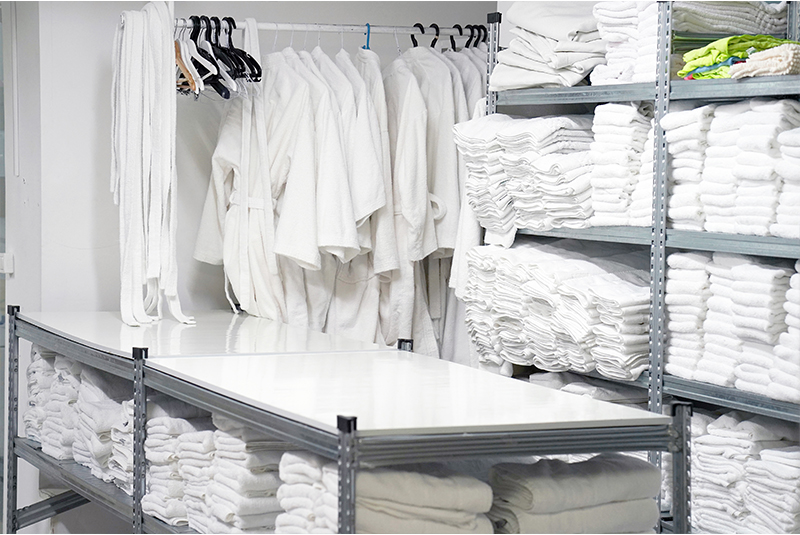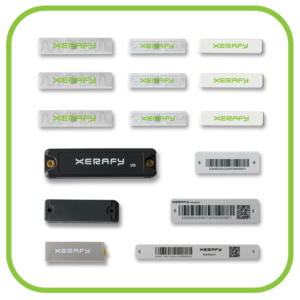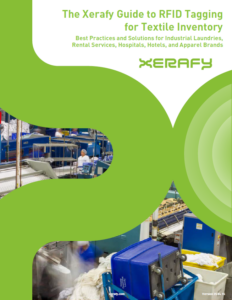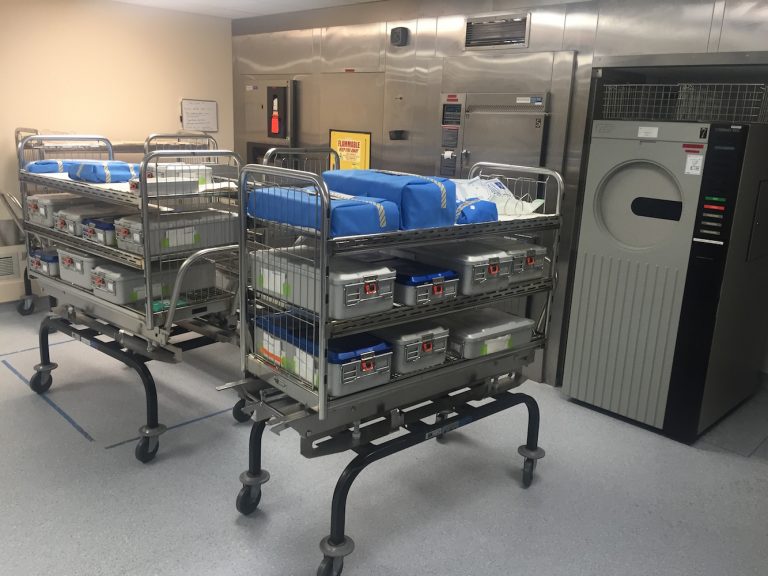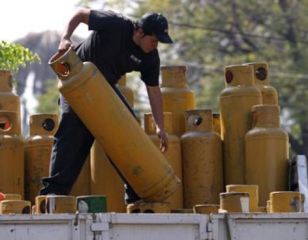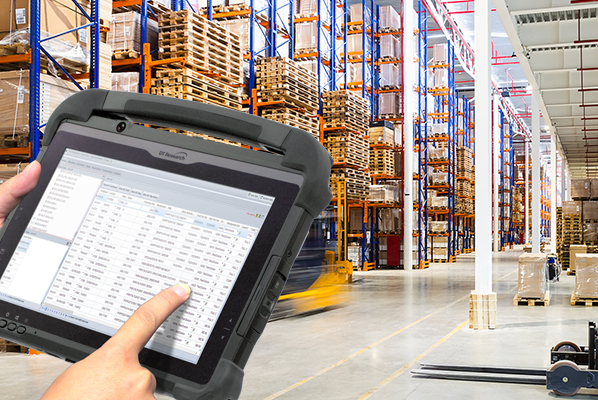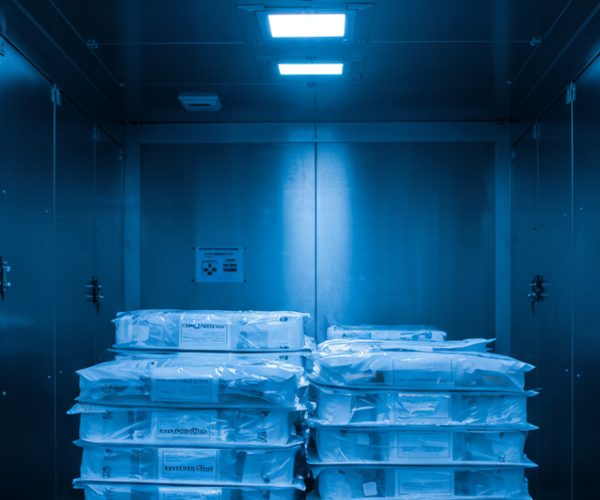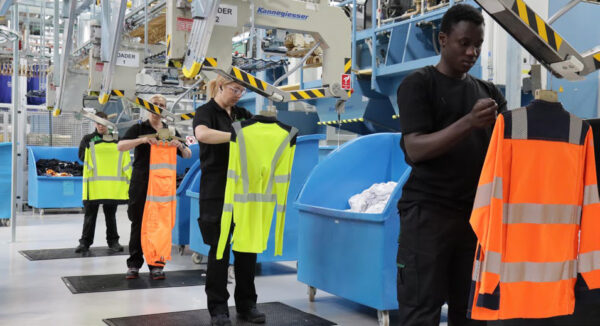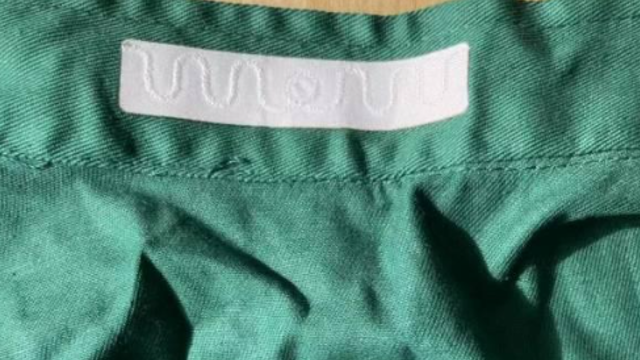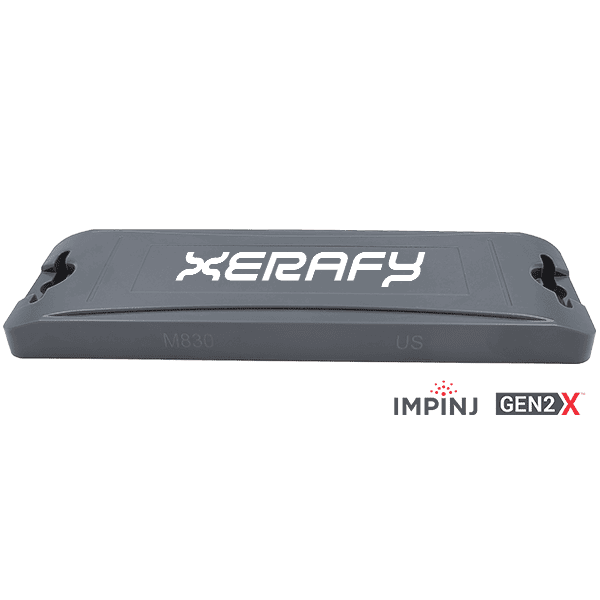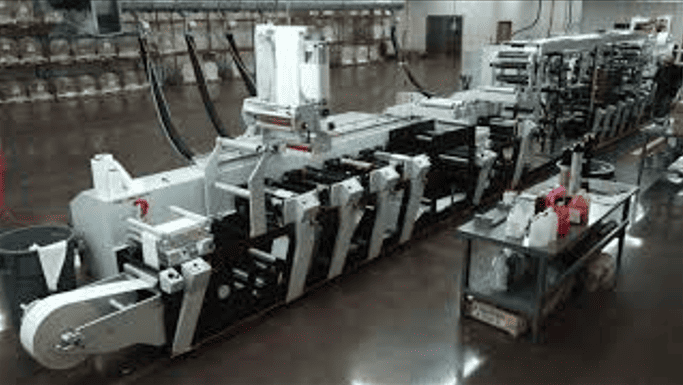A midsize hotel will encounter annual textile losses reaching $200,000, driven by shrinkage, theft, and tracking blind spots. As pressure grows to cut costs, improve sustainability, and deliver consistently high service standards, hotels are rethinking how they manage textile inventory. RFID (Radio Frequency Identification) brings automation and real-time visibility to the heart of hotel laundry workflows—without disrupting existing processes.
Read on to see how hotels are using RFID to bring control, accountability, and efficiency to linen service.
The Cost of Poor Linen Inventory Control
Towels, linens, robes, napkins, uniforms—textiles move constantly through hotel operations. Between guest rooms, spas, restaurants, and laundry facilities, it’s easy for items to go missing, miscounted, or mismatched. What seems like minor loss at the item level quickly scales into a significant financial drain.
- Linen replacement costs for mid-size hotels can exceed $200,000 per year, often with no clear visibility into where those losses occur.
- In some cases, thousands of towels per month are lost to theft or mishandling, with little accountability.
- Stock imbalances force hotels to over-purchase to maintain service levels, tying up capital in inventory that may never be used efficiently.
- Manual tracking methods—paper logs, barcode scans, spreadsheets—are time-consuming and prone to human error.
This lack of visibility affects more than just laundry budgets. It impacts room readiness, spa operations, and ultimately, the guest experience.
How Hotels Are Using RFID to Improve Linen Service
While many hotels still rely on manual processes to track linen inventory, others have already found a better way. From international hotel chains to specialized hotel linen service companies, RFID is being deployed to reduce shrinkage, improve turnaround, and elevate service standards.
Hotels and resorts have been embedding RFID in towels and linens for over a decade—proof that the technology is trusted, mature, and ready for scale.
A hotel that implemented RFID tags on its towels saw monthly losses drop from 4,000 to 750—saving over $16,000 per month in theft-related replacement costs.
(Source: View From The Wing)
RFID allows each textile item to carry a unique, washable identity, embedded directly into the fabric. These tags are read automatically—no line-of-sight needed—at various points throughout the linen lifecycle.
Hotels and service providers using RFID report:
- Improved inventory control: Real-time visibility into usage trends and stock levels
- Reduced shrinkage and theft: Loss tracking down to the item and location
- Faster reconciliation: Accurate counts between hotel, laundry, and vendors
- Smarter distribution: The right items in the right place, without overstocking
- Greater sustainability: Extended linen lifecycles and reduced waste support hotel environmental goals
RFID doesn’t replace your linen service—it augments it. It fits seamlessly into both in-house laundry setups and third-party hotel linen service company workflows.
For guests, that means no towel shortages at the spa, no delays at check-in, and a consistently high-quality experience.
How RFID Linen Tracking Works in Practice
RFID brings automation to the linen workflow without changing how hotels operate day-to-day.
1. RFID Tags Are Embedded in LinensEach towel, sheet, robe, or uniform is tagged with a washable RFID chip—heat-sealed or sewn discreetly into a seam. These tags withstand 200+ industrial laundry cycles, including bleach, heat, and pressure.
2. Tags Are Read AutomaticallyAt key points in the cycle—pickup, washing, return, distribution—RFID readers capture data in bulk:
- In carts or laundry bags
- Through tunnel and conveyor systems
- At delivery/receiving checkpoints
3. Data Flows Into Your SystemEach scan updates linen inventory in real time:
- What was delivered or collected
- What’s in circulation, overdue, or missing
- Usage patterns and turnaround rates
This can integrate with your PMS, inventory software, or a standalone dashboard, giving full visibility to both hotel and laundry teams.
From room to laundry and back, every tagged item is accounted for—reducing losses, saving time, and enhancing control.
Selecting the Right RFID Tags for Guest-Facing Textiles
Not all RFID tags are made for the hospitality environment. Hotel linens require a careful balance of durability, comfort, and discretion. A tag must survive hundreds of washes while remaining invisible to the guest.
What to look for in hotel-appropriate RFID tags:
- Laundry durability: Heat, bleach, pressure—200+ cycles
- Textile-friendly design: Flat and flexible, easily sewn or heat-sealed
- Discreet placement: Corners, hems, and seams to avoid guest contact
- Consistent readability: Even when folded, stacked, or wet
Proper tag placement is just as important as tag selection. Even the most durable RFID tags won’t perform reliably if installed in poor locations or orientations.
This short video from Xerafy’s engineering team demonstrates best practices for placing tags to ensure consistent reading across 200+ commercial wash cycles.
The Xerafy TEX TRAK series is purpose-built for these needs:
- Heat-sealable or sewable options
- Available in multiple materials and sizes
- Designed for comfort, performance, and longevity
How Hotels Are Deploying RFID
RFID adoption doesn’t require a system overhaul. Many hotels begin with a simple pilot: tagging one item category, one site, or one laundry loop.
It works whether your laundry is in-house or handled by an external linen service company.
Common Deployment Models:- In-house laundry tagging
- Reconciliation with external laundry partners
- Chain-wide rollouts with centralized systems
What You Need:- RFID tags matched to your textiles and wash process
- Fixed or handheld readers installed at key checkpoints
- Basic tracking software (or integration with existing tools)
- Minimal staff training—no barcode alignment or special handling
Smarter Hotel Linen Service Starts With RFID
RFID is no longer an emerging idea—it’s a proven solution. Hotels around the world are already seeing the results:
- Lower replacement costs
- Faster operations
- A better guest experience
- A lighter environmental footprint
RFID gives hotel operations the real-time visibility, automation, and control needed to run efficient linen service at scale.
Ready to Get Started?- [ ] Download the Textile Application Guide
Get technical specifications and installation best practices for RFID laundry tags. - [ ] Order a Textile Test Pack
Try Xerafy’s washable RFID tags on your own hotel towels, robes, or uniforms. - [ ] Ask the Xerafy Engineering Team
Get expert advice tailored to your hotel’s linen service setup. - [ ] See RFID in Action
Explore use cases from apparel brands and hospital linen tracking.
Xerafy is a pioneer in Industrial RFID, bringing to market several innovations that enable advanced identification and automation capabilities in manufacturing.
In addition to a complete range of field-proven RFID tags available off-the-shelf, Xerafy offers Custom RFID Tags services, covering everything from a personalization service bureau to custom-design engineering capabilities.
